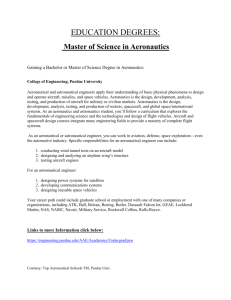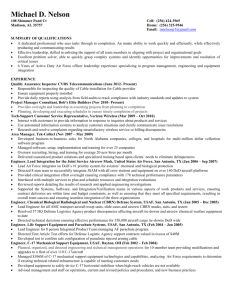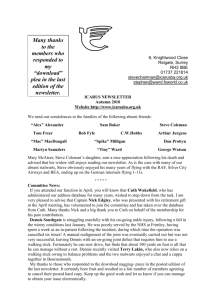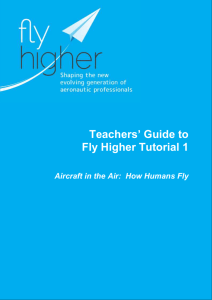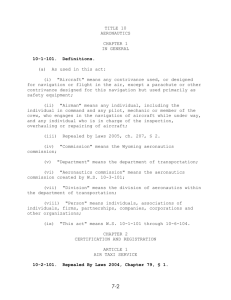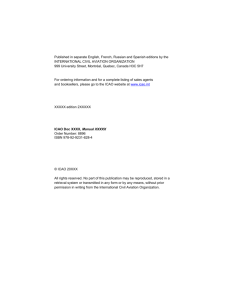NoNamegifted_lesson_math
advertisement
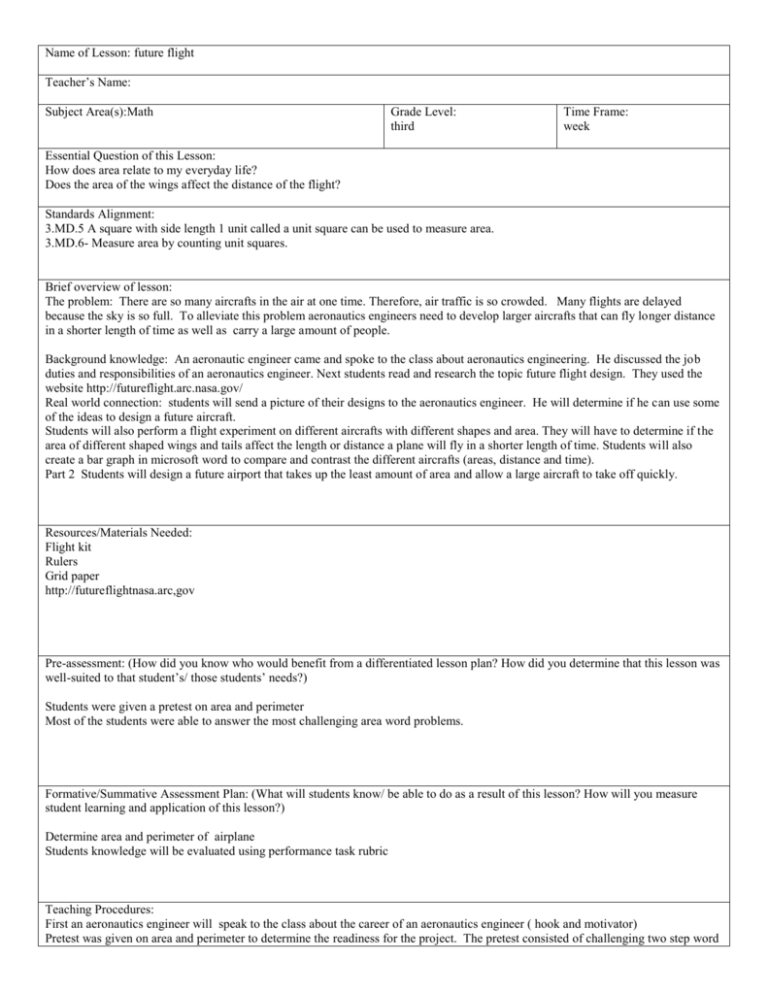
Name of Lesson: future flight Teacher’s Name: Subject Area(s):Math Grade Level: third Time Frame: week Essential Question of this Lesson: How does area relate to my everyday life? Does the area of the wings affect the distance of the flight? Standards Alignment: 3.MD.5 A square with side length 1 unit called a unit square can be used to measure area. 3.MD.6- Measure area by counting unit squares. Brief overview of lesson: The problem: There are so many aircrafts in the air at one time. Therefore, air traffic is so crowded. Many flights are delayed because the sky is so full. To alleviate this problem aeronautics engineers need to develop larger aircrafts that can fly longer distance in a shorter length of time as well as carry a large amount of people. Background knowledge: An aeronautic engineer came and spoke to the class about aeronautics engineering. He discussed the job duties and responsibilities of an aeronautics engineer. Next students read and research the topic future flight design. They used the website http://futureflight.arc.nasa.gov/ Real world connection: students will send a picture of their designs to the aeronautics engineer. He will determine if he can use some of the ideas to design a future aircraft. Students will also perform a flight experiment on different aircrafts with different shapes and area. They will have to determine if the area of different shaped wings and tails affect the length or distance a plane will fly in a shorter length of time. Students will also create a bar graph in microsoft word to compare and contrast the different aircrafts (areas, distance and time). Part 2 Students will design a future airport that takes up the least amount of area and allow a large aircraft to take off quickly. Resources/Materials Needed: Flight kit Rulers Grid paper http://futureflightnasa.arc,gov Pre-assessment: (How did you know who would benefit from a differentiated lesson plan? How did you determine that this lesson was well-suited to that student’s/ those students’ needs?) Students were given a pretest on area and perimeter Most of the students were able to answer the most challenging area word problems. Formative/Summative Assessment Plan: (What will students know/ be able to do as a result of this lesson? How will you measure student learning and application of this lesson?) Determine area and perimeter of airplane Students knowledge will be evaluated using performance task rubric Teaching Procedures: First an aeronautics engineer will speak to the class about the career of an aeronautics engineer ( hook and motivator) Pretest was given on area and perimeter to determine the readiness for the project. The pretest consisted of challenging two step word problems. Students then completed a contract to organize their plan of action. Students researched future flight topic on www.futurflight.arc and took notes. Student s was encouraged to use notes on future aircraft designs and airports from the videos and website to offer ideas on how to design a future aircraft. After students researched the topic. They will begin their experiment with designing an aircraft with different shapes and areas. Before each flight students will make a hypothesis on which aircraft that they think will fly the farthest in a short amount of time. Students will draw different shapes with different areas for the construction of the wings and tail. The y will use grid paper that the real aeronautics engineers use to trace their shapes onto Then they will glue the wings and tail onto the stick or body of the aircraft.. Next they will calculate the area using square units and then using a ruler to measure the lengths and widths in inches. Students will perform their task of flying the different aircrafts outside. When they finish their experiment they will graph their findings in Microsoft words. The second part of the project is to design a future runway that will allow their aircraft to take off quickly and doesn’t take up a lot of area in order to conserve green space. The students will use grid paper to calculate the area and perimeter. The second part of the project will require the students to research future airports on www.futurflight.arc and the different types of airport runways. Then they will design an airport runway with different quadrilaterals, 2D and 3D shapes. Students will be encouraged to create local attractions that use flexibility and originality. Reflection on this lesson: (What aspects worked particularly well? How would you improve this lesson? What were some “Ah-Ha” moments?) Students were motivated and enjoyed designing the aircrafts using the Midwest aircraft kit. The Ah-ha moment was them constructing how to design and decide on the best way to create the aircraft. I learned that if you give step by step checklist and a rubric they were able to work independently. The aeronautics engineer modeled how to make the aircraft but, I allowed them to create and decide on the best way to construct the aircraft. They tried different ways to assemble the plane. It was fun and exciting to see them construct the planes .The second part took more time to research and design. However, it originated a lot of discussion. Also, it took longer to complete the airport runway because the research and information was very in depth. I would improve the lesson by maybe next time have a civil engineer to come help them design an airport and discuss their career ( I am planning on having one to come and speak with the class).
